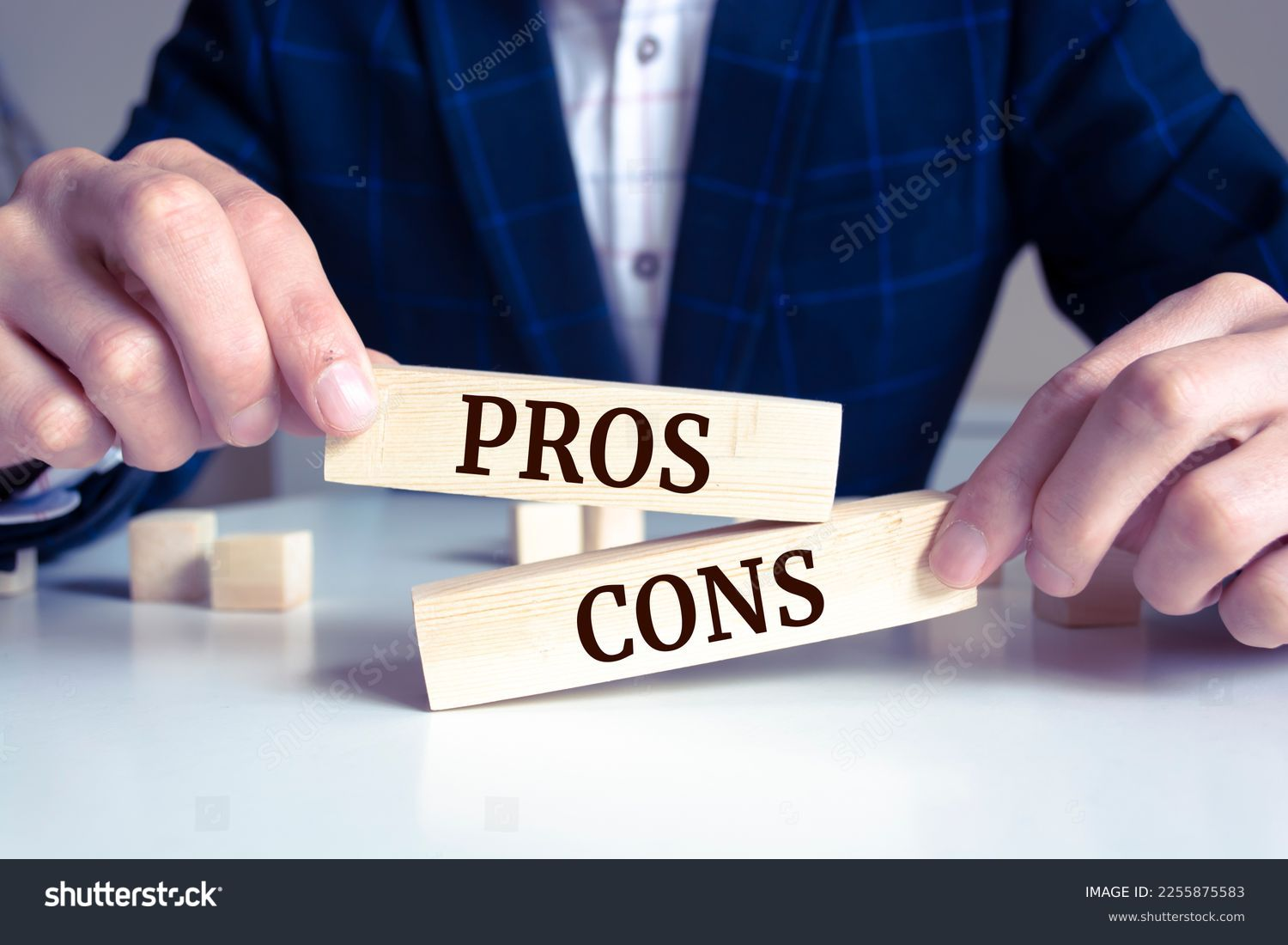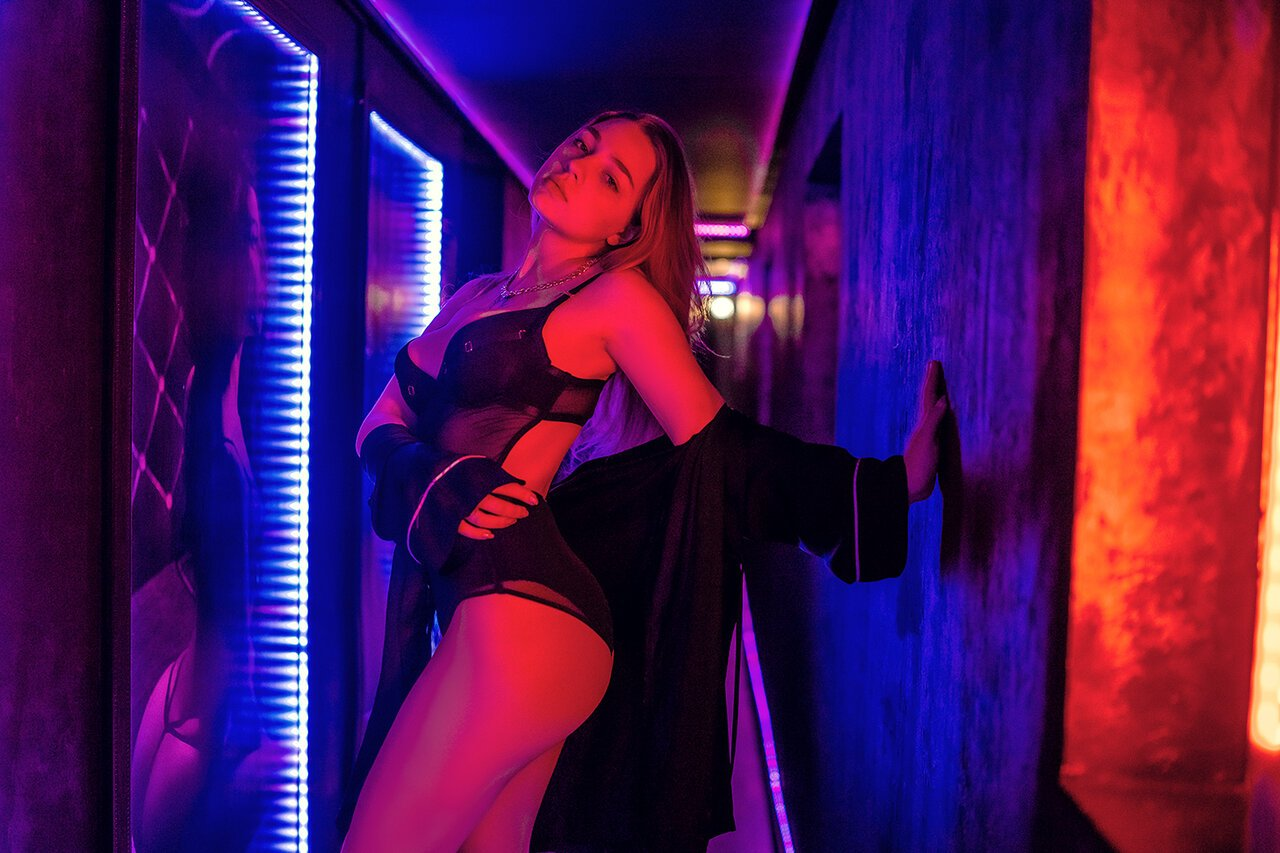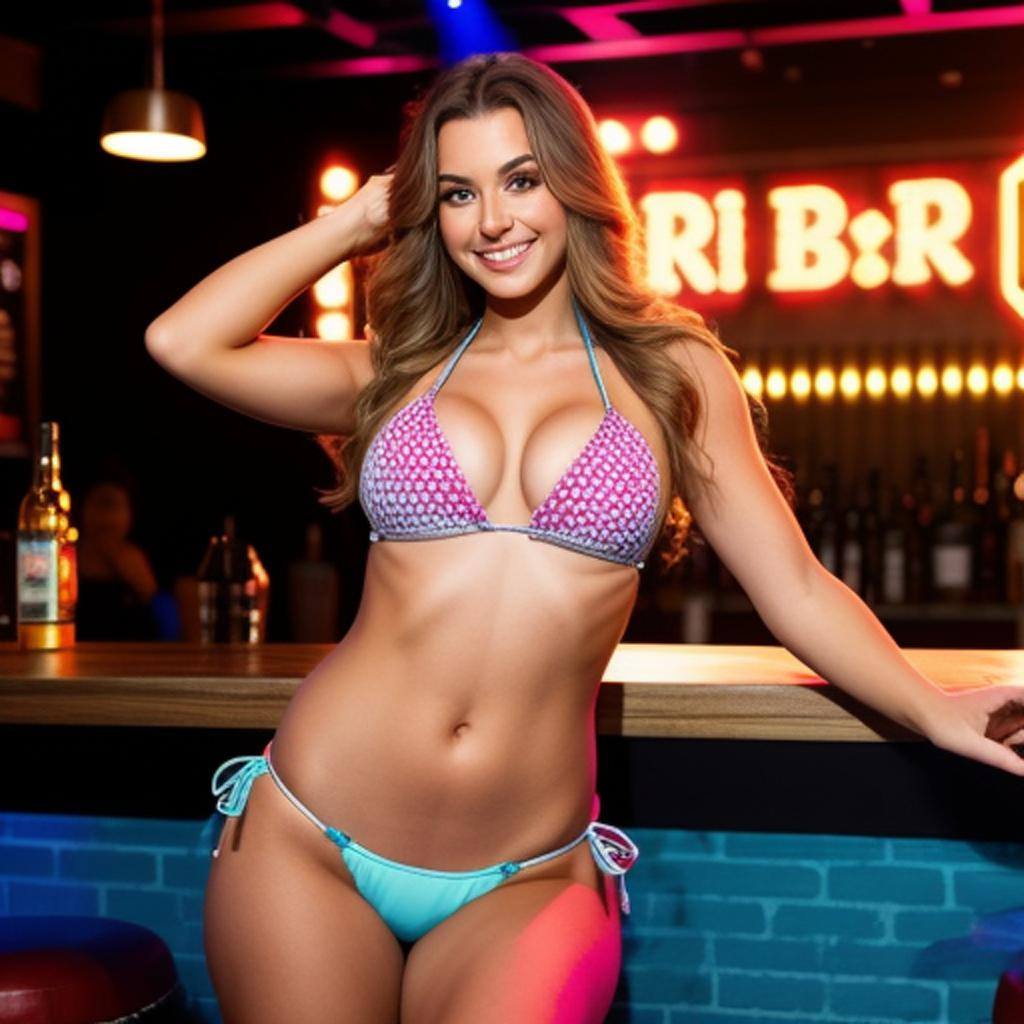Strip shows, often associated with the vibrant nightlife and adult entertainment, industry, have long been a staple of popular culture. From their early roots in burlesque and vaudeville to the modern-day performances in the strip clubs, and theatres, strip shows have evolved significantly. They are now celebrated for their artistic expression, intricate choreography, and the skill of their exotic dancers. These shows are not merely about titillation; they are a complex blend of performance art, theatre, and dance, showcasing a wide range of talents and artistic visions.
In recent past years, the concept of body positivity has gained substantial traction in the world and society. Body positivity is a movement that advocates for the acceptance and appreciation of all body types, challenging the narrow beauty standards often perpetuated by media and society generally. It emphasises the importance of self-love, mental health, and the recognition that beauty comes in all shapes, sizes, and forms.
Strip shows, by their very nature, have become an unexpected yet powerful platform for promoting body positivity. These performances celebrate the human body in its many variations, breaking away from conventional beauty norms and providing a space where diverse body types are not only accepted but celebrated. Strippers and performers in strip shows often embody confidence and self-assurance, showcasing their bodies with pride and challenging patrons to rethink their perceptions of beauty.
Thus, strip shows play a significant role in promoting body positivity by showcasing diverse body types, empowering strippers and performers through dancing, entertaining, and challenging societal beauty standards. Through their inclusive performances, strip show, they foster a culture of acceptance and self-love, making a meaningful impact on both strippers or performers and crowd alike.
Historical Context and Evolution

The Evolution of Strip Shows
Strip shows have a rich and varied history, evolving significantly from their ancient origins to the modern spectacles we expect to see today. The earliest forms of striptease can be traced back to ancient civilizations, where dances and performances often used nudity and had ritualistic and celebratory purposes. For instance, in ancient Greece, certain dances involved elements of nudity and acts of undressing, symbolizing fertility and abundance.
During the late 19th and early 20th centuries, striptease became a prominent feature of burlesque shows. Burlesque was a theatrical entertainment that combined comedy, music, and dance, often incorporating risqué elements and satire. These performances were popular in Europe and North America, with striptease becoming a key attraction. Iconic performers like Gypsy Rose Lee brought sophistication and artistry to the striptease routine, elevating it to a celebrated art form.
The mid-20th century saw the rise of strip clubs and the commercialization of stripping and striptease. Las Vegas, in particular, became a city synonymous with glamorous strip club and shows, featuring elaborate costumes, choreographed routines, and world famous headliners. These shows were designed to entertain and dazzle audiences, incorporating elements of theatre and dance.
In contemporary times, strip club shows have continued to evolve, embracing modern aesthetics and technology. Today, stripper’s performances often blend traditional elements with innovative choreography, multimedia effects, and diverse themes. This evolution of strip club reflects broader cultural changes and the increasing acceptance of striptease as a legitimate form of entertainment and art.
Incorporating Diversity
A significant shift in the business of adult entertainment in recent past years has been the move towards greater inclusivity and representation of diverse body types in strip shows. Historically, strip shows often adhered to narrow beauty standards, favouring strippers and performers who fit conventional ideals of attractiveness. However, the body positivity movement has sparked a transformation in this industry.
Modern night and strip shows now celebrate a wider range of body types, ethnicities, and gender identities than past one. This inclusivity is reflected in the casting of strippers and night show performers who showcase different body shapes, sizes, and appearances. By doing so, these night show shows challenge societal norms and promote the idea that beauty is diverse and multifaceted.
Strippers and performers with varying body types, including plus-size and differently-abled individuals, are now being embraced on stage, highlighting the message that confidence and talent are not confined to a single body type. This shift not only empowers performers but also resonates with audiences, mostly girls, many of whom see themselves represented in the performers they admire.
The inclusivity in contemporary strip shows aligns with the broader goals of the body positivity movement, fostering acceptance, self-love, and the celebration of all bodies. By showcasing diverse body types, strip shows play a crucial role in challenging and redefining beauty standards, making the stage a powerful platform for promoting body positivity.
Representation in Strip Shows

Importance of Diverse Representation
Diverse representation in strip shows is crucial for promoting body positivity and self-acceptance. When crowd see performers of various body types, ethnicities, and abilities, it helps to break down narrow beauty standards and fosters a more inclusive perception of beauty. This representation is not only empowering for the performers but also for the patron members who see themselves reflected on stage.
Showcasing diverse body types can challenge preconceived notions about what is considered attractive or desirable. It promotes the idea that beauty comes in all shapes and sizes, encouraging individuals to embrace and appreciate their own unique bodies. This inclusivity helps to combat body shaming and fosters a culture of acceptance and self-love.
Ethnic diversity in strip shows also plays a significant role in promoting cultural inclusivity. It allows for the celebration of different cultural backgrounds and traditions, enriching the performances and broadening the audience’s understanding and appreciation of diverse cultures. This can help to dismantle racial stereotypes and promote a more inclusive society.
Featuring performers with different abilities highlights the importance of inclusivity in theater and challenges societal norms about who can be a performer. It sends the world a powerful message that talent and confidence are not limited by physical abilities, and everyone deserves to perform and be celebrated for their uniqueness.
Empowerment Through Performance
Performing in strip clubs and shows can be a powerful form of empowerment for individuals. These performances allow artists who perform to express confidence, self-love, and control over their bodies and narratives. By showcasing their talents and embracing their unique physical attributes, performers challenge societal beauty standards and redefine what it means to be beautiful and desirable.
For many performers, strip shows offer a platform to celebrate their bodies and showcase their skills in a supportive and appreciative environment. This experience can be incredibly liberating, helping individuals to overcome insecurities and embrace their physicality with pride. The act of performing, with its inherent vulnerability and exposure, can build a strong sense of self-confidence and empowerment. It allows performers to take ownership of their bodies and their sexuality, transforming the stage into a space of self-affirmation and artistic expression.
Impact of Social Media and Campaigns

Social Media Influence
Social media platforms play a crucial role in spreading body positivity messages and challenging unrealistic beauty standards. Platforms like Instagram, Facebook, and TikTok are particularly effective in reaching large audiences and fostering communities around shared values of self-love and acceptance.
1. Amplifying Voices Social media allows individuals and influencers to share their personal journeys and experiences with body positivity. Influencers like Ashley Graham and Tess Holliday use their platforms to promote self-love and acceptance, reaching millions of followers. Their posts often include unedited photos, personal stories, and messages encouraging their patrons to embrace their bodies as they are.
2. Creating Communities Hashtags like #BodyPositivity, #SelfLove, and #EffYourBeautyStandards have created virtual communities where people can share their experiences, support each other, and challenge societal norms. These online communities provide a space for individuals to connect with others who share similar life experiences and values, fostering a sense of solidarity and empowerment.
3. Challenging Norms Social media campaigns often include powerful visuals, music and narratives that challenge traditional beauty standards. By showcasing diverse body types and promoting messages of self-acceptance, these campaigns help to shift societal perceptions of beauty. The visibility of diverse bodies on social media platforms helps to normalize different body types and reduce the stigma associated with not fitting conventional beauty ideals.
4. Educational Content Social media is also a valuable platform for educational content related to body positivity. Accounts and pages dedicated to body positivity often share articles, infographics, and videos that educate their patrons about the importance of self-love, the dangers of body shaming, and the benefits of embracing diversity. This educational aspect helps to raise awareness and promote a deeper understanding of body positivity issues.
5. Impact on Younger Audiences The influence of social media on younger audiences is particularly significant. Many young people turn to social media for inspiration and validation. Body-positive content on these platforms can help to counteract the negative impact of unrealistic beauty standards often perpetuated by mainstream media. By providing positive role models and messages, social media can play a crucial role in shaping healthier body image perceptions among youth.
Educational Aspects and Awareness

Raising Awareness
Strip shows, comedy, and related art forms play a significant role in educating audiences about body positivity, body shaming, and mental health. These performances provide a unique platform to challenge societal norms and foster discussions on important issues.
Promoting Body Positivity Strip shows often feature performers of diverse body types, ethnicities, and abilities, which helps to normalize and celebrate these differences. By showcasing a wide range of bodies in a positive and empowering light, these performances can educate audiences about the importance of body positivity and self-acceptance. This representation can counteract the harmful effects of media that often promote narrow and unrealistic beauty standards.
Addressing Body Shaming Performances that include narratives or themes about overcoming body shaming can be particularly powerful. These shows can highlight personal stories of struggle and triumph, helping to educate audiences about the damaging effects of body shaming and the importance of compassion and acceptance. By bringing these issues to the forefront, strip shows can spark important conversations and promote a more inclusive culture.
Mental Health Awareness Many strip show performers openly discuss their mental health journeys, including struggles with body image, self-esteem, and societal pressures. By sharing these experiences, performers can raise awareness about mental health issues and reduce the stigma associated with them. These stories can inspire audiences to seek help and support, fostering a more understanding and empathetic community.
Workshops and Performances
Combining strip shows, music and dancing with educational elements can further promote self-love and mental well-being among girls. Workshops and performances that integrate educational content can be highly effective in spreading these messages among girls.
Educational Workshops Some strip shows incorporate workshops that focus on body positivity, self-love, and mental health. These workshops may include activities like body-positive dance classes, self-acceptance seminars, and mental health discussions. By providing a space for education and reflection, these workshops can help participants develop a healthier relationship with their bodies and minds.
Interactive Performances Interactive performances that engage the patrons in discussions or activities related to body positivity and mental health can enhance the educational impact of strip shows. For example, performances might include segments where performers share their personal stories or answer questions from the patrons. This interaction can create a more intimate and impactful experience, helping to reinforce the messages of self-acceptance and empowerment.
Collaborations with Mental Health Professionals Some strip shows collaborate with mental health professionals to provide resources and support for both performers and audiences. These collaborations can include on-site counselors, informational booths, and referrals to mental health services. By offering these resources, strip shows can play a proactive role in promoting mental well-being and supporting those in need.
Community Building Events Events that bring together performers, audiences, and mental health advocates can create a strong sense of community and solidarity. These events might include panel discussions, support groups, and social gatherings that focus on body positivity and mental health. By fostering a supportive and inclusive environment, these community-building events can help to reinforce the educational messages of strip shows.
Body Positivity and Mental Health

Psychological Benefits
Body-positive media and performances, and acts such as those in strip shows, have a substantial positive impact on mental health. These benefits include reducing anxiety, depression, and body dysmorphia by promoting self-acceptance and a healthier body image.
Reducing Anxiety and Depression Exposure to body-positive content helps individuals feel more accepted and less judged, which can significantly reduce feelings of anxiety and depression. When people see diverse body types celebrated on stage, it can challenge their own negative self-perceptions and foster a more positive self-image. This shift in perception helps to alleviate the stress and sadness often associated with not fitting into conventional beauty standards.
Combating Body Dysmorphia Body dysmorphia, a condition where a person obsesses over perceived flaws in their appearance, can be mitigated through exposure to body-positive messages. Performances that highlight the beauty of all body types can help individuals see their own bodies in a more positive light. By normalising diversity in appearance, these performances reduce the pressure to conform to a single, narrow standard of beauty, thereby diminishing the intensity of body dysmorphic thoughts.
Improving Self-Esteem Seeing a range of body types represented positively on stage can boost self-esteem. It reinforces the idea that beauty is not limited to a specific size or shape, encouraging individuals to appreciate their own bodies. This boost in self-esteem can lead to better mental health outcomes, as individuals who feel good about themselves are more likely to engage in healthy behaviours and seek support when needed.
Supportive Environment
Creating a supportive atmosphere in a strip club setting and shows is crucial for fostering acceptance and self-love among women. When strip clubs and shows embrace diversity and promote body positivity, they can become powerful environments for both performers and audiences.
Encouraging Acceptance A supportive strip show environment encourages acceptance by celebrating all body types. Performers who feel accepted and valued for their uniqueness are more likely to project confidence and self-love, which in turn inspires the patrons. This cycle of acceptance helps to build a community where everyone feels valued, regardless of their appearance.
Building Community Strip shows that focus on body positivity often attract audiences who share similar values of inclusivity and self-acceptance. This shared experience can foster a sense of community among audience members and performers. Being part of such a community can provide emotional support and a sense of belonging, which are vital for mental health.
Providing a Safe Space When strip shows create a safe space where diversity is celebrated, individuals feel more comfortable expressing themselves and exploring their identities. This safe environment can help people to feel less isolated and more connected to others who appreciate and support them. Knowing that they are in a judgement-free zone can reduce stress and anxiety, allowing for a more positive experience overall.
Promoting Positive Interaction Interactive elements of strip shows, such as Q&A sessions or meet-and-greet events with performers, can further enhance the supportive environment. These interactions allow audiences to engage with performers on a personal level, fostering deeper connections and understanding. Positive interactions can reinforce the messages of body positivity and self-love, making the experience even more impactful.
Strip Shows as a Form of Protest
Activism and Advocacy
Strip shows have occasionally served as powerful platforms for activism and advocacy, with women using nudity and performance art to challenge societal norms and promote body positivity. These performances can be a form of protest against restrictive beauty standards, gender norms, and other societal pressures, advocating for broader acceptance and inclusivity.
Challenging Beauty Standards Some strip shows deliberately feature performers with diverse body types, ethnicities, and abilities to confront and dismantle traditional beauty ideals. By celebrating a wide range of bodies, these shows protest against the narrow and often harmful standards perpetuated by mainstream media. This form of activism encourages audiences to question their own perceptions of beauty and to embrace diversity.
Gender and Sexuality Strip shows can also be a medium for challenging gender norms and promoting acceptance of various sexual orientations and identities. Performers may use their platform to express gender fluidity, non-binary identities, and queer culture, advocating for greater understanding and acceptance within society.
Body Positivity Movement Many performers and shows align themselves with the body positivity movement, using their art to spread messages of self-love and acceptance. These performances often include narratives or themes that address body shaming, eating disorders, and the importance of mental health, making them a form of advocacy for the broader body positivity cause.
Examples of Protest Performances
The SlutWalk Movement The SlutWalk movement, which started in 2011, is a global protest against rape culture and victim blaming. In many SlutWalk events, participants use elements of striptease and provocative clothing as a form of protest. These performances challenge the notion that a person’s attire or behavior can justify sexual assault, advocating for respect and bodily autonomy for all individuals.
Burlesque Against Breast Cancer Burlesque Against Breast Cancer is an example of how strip shows can be used for activism and advocacy. These performances raise awareness about breast cancer and promote body positivity by celebrating the beauty and strength of survivors. The shows often include narratives about personal struggles and triumphs, using the stage to educate and inspire.
Feminist Strip Clubs Some feminist strip clubs have emerged with a focus on body positivity, consent, and empowerment. These venues prioritize the well-being and autonomy of performers, creating a space where activism and performance intersect. By promoting ethical practices and celebrating diverse bodies, these clubs challenge the exploitative nature of traditional strip clubs and advocate for a more inclusive industry.
The Naked Truth Project The Naked Truth Project combines elements of striptease with educational content to challenge misconceptions about sex work and promote body positivity. Through performances, workshops, and discussions, the project aims to dismantle stigma and encourage a more nuanced understanding of the business and its workers.
Exotic Resistance Exotic Resistance is a collective of sex workers and performers who use striptease as a form of protest. Their performances often address issues such as workers’ rights, bodily autonomy, and social justice. By combining activism with artistry, Exotic Resistance uses the stage to amplify marginalized voices and advocate for systemic change.
Collaborations with Body Positivity Advocates

Partnerships
Strip clubs have increasingly collaborated with body positivity advocates and organizations to promote inclusive beauty standards and foster a culture of acceptance and self-love. These partnerships help to amplify messages of body positivity and ensure that diverse body types are celebrated both on and in life off the stage.
Collaborations with Body Positive Influencers Many strip clubs partner with body positive influencers who advocate for the acceptance of all body types. These influencers often participate in performances, workshops, and promotional campaigns, using their platforms to highlight the importance of diversity in beauty standards. By joining forces, strip clubs and influencers can reach wider patrons and spread their message more effectively.
Partnerships with Non-Profits Strip show sometimes collaborates with non-profit organizations dedicated to body positivity and mental health. These partnerships can include fundraising events, joint campaigns, and educational initiatives. For instance, a strip show might host a charity event where proceeds go to organizations that support body positivity and mental health awareness.
Corporate Collaborations Some strip clubs have partnered with brands that promote body positivity through their marketing and product lines. These collaborations can include sponsored events, product placements, and co-branded campaigns that emphasize the celebration of diverse body types. Brands like Dove and Aerie, known for their body positive campaigns, have been involved in such partnerships to further their commitment to inclusivity.
Community Efforts
Strip show and body positivity advocates often engage in joint efforts to create a more inclusive and accepting society through performances and campaigns. These community-focused acts and initiatives help to break down barriers and promote a culture of acceptance and self-love.
Educational Campaigns Joint educational campaigns between strip shows and body positivity organizations can help to raise awareness about the importance of inclusivity and self-acceptance. These campaigns might include social media initiatives, public service announcements, and informational workshops that educate the public about the benefits of body positivity and the harms of body shaming.
Inclusive Performances Many strip clubs now feature inclusive performances that highlight the beauty of all body types. These shows often include narratives and themes that generally promote body positivity and challenge traditional beauty standards. By showcasing diverse performers, these strip shows present and send a powerful message about the importance of accepting and celebrating all bodies.
Community Events Strip show and body positivity advocates often organize community events that bring people together to celebrate diversity and promote self-love. These events might include body positive festivals, panel discussions, and interactive workshops that encourage participants to embrace their unique bodies and support one another in their journey towards self-acceptance.
Advocacy and Policy Change Some collaborations focus on advocacy and policy change, working to ensure that body positivity is reflected in media, fashion, and entertainment industries. These efforts might include lobbying for more inclusive casting in media, promoting diversity in fashion shows, and advocating for better representation of all body types in advertising and entertainment.
Educational Workshops and Performances

Integration of Education and Performance
Strip show that integrate both dancing with educational workshops on body positivity, self-love, and mental health provide a unique and impactful experience for dancers and the crowd. These integrated performances not only entertain patrons, but also educate, fostering a culture of acceptance and self-love.
The Velvet Revue The Velvet Revue is known for its body-positive approach and often includes educational workshops as part of its performances. These workshops cover topics such as self-acceptance, overcoming body shaming, and mental health awareness. By combining entertainment with education, The Velvet Revue creates a space where audiences can learn about important issues while enjoying a captivating performance.
Burlesque Against Breast Cancer This initiative combines burlesque performances with educational workshops on breast cancer awareness and body positivity. The performances celebrate survivors and promote messages of strength and resilience, while the workshops provide valuable information about breast health and self-examinations. This combination helps to raise awareness and support for breast cancer research while promoting body positivity.
The Naked Truth Project The Naked Truth Project is an educational and performance initiative that aims to dismantle misconceptions about sex work and promote body positivity. Their events often include strip show that are paired with workshops on topics like self-love, mental health, and the realities of the sex industry. By integrating these elements, The Naked Truth Project provides a holistic approach to education and entertainment.
Impact on Audiences
These integrated theater and dance performances have a profound impact on audiences, helping to spread awareness and foster a culture of acceptance and self-love.
Raising Awareness By combining performances with educational content, these shows raise awareness about important issues such as body shaming, mental health, and the importance of self-acceptance. Audiences leave with a deeper understanding of these topics and are more likely to engage in conversations and actions that promote body positivity.
Encouraging Self-Love Workshops that focus on self-acceptance and body positivity provide audiences with practical tools and strategies to improve their self-esteem. By hearing personal stories and participating in interactive activities, individuals can begin to embrace their bodies and cultivate a more positive self-image.
Creating a Supportive Community These integrated performances often create a sense of community among attendees. The shared experience of learning and celebrating together fosters a supportive environment where individuals feel accepted and valued. This sense of community can have a lasting positive impact on mental health and overall well-being.
Challenging Societal Norms By showcasing diverse body types and promoting messages of inclusivity, these performances challenge traditional beauty standards and societal norms. Audiences are encouraged to question and redefine their perceptions of beauty, leading to a more inclusive and accepting society.
Promoting Mental Health Discussions and workshops on mental health provide audiences with valuable insights and resources. These sessions help to reduce stigma, encourage open conversations about mental health, and provide strategies for managing stress and anxiety. The combination of performance and education creates a powerful platform for promoting mental well-being.
Community Support and Solidarity

Building a Supportive Community
Strip shows often create a strong sense of community and solidarity among both performers, dancers, patrons, exotic dancers and audiences. This environment fosters acceptance, support, and a collective embrace of body positivity.
Supportive Atmosphere Strip show that emphasizes body positivity typically cultivate a welcoming and supportive atmosphere. Performers feel empowered to showcase their authentic selves, and audiences are encouraged to celebrate and appreciate the diversity of bodies. This mutual respect and encouragement help to build a community where everyone feels valued and accepted.
Inclusive Practices Many strip show adopt inclusive practices, such as hiring performers of diverse body types, ethnicities, and abilities. These practices signal to both performers and audiences that all bodies are worthy of celebration. Inclusive hiring practices and diverse representation on stage reinforce the message of body positivity and help to create a more accepting community.
Interactive Elements Strip show that include interactive elements, such as audience participation or Q&A sessions with performers, help to break down barriers between performers and audiences. These interactions foster a sense of camaraderie and solidarity, making the audience feel more connected to the performers and the messages being conveyed.
Shared Experiences
The role of shared life experiences in promoting body positivity and self-acceptance is significant. When individuals come together to celebrate diversity and challenge societal norms, it creates a powerful collective impact.
Empowerment Through Performance Performers who share their personal stories of struggle and triumph with body image issues can inspire audiences to embrace their own bodies. These shared experiences highlight the common challenges people face and the strength it takes to overcome them. Seeing performers confidently display their bodies helps audience members feel empowered to do the same.
Audience Connection Shared experiences between performers and audiences can lead to deeper connections and mutual understanding. When audiences see themselves represented on stage, it can validate their own experiences and promote a sense of belonging. This connection helps to reinforce the message that all bodies are beautiful and worthy of love.
Community Events Strip show often host community events, such as body-positive festivals, panel discussions, and workshops, where individuals can share their experiences and learn from one another. These events create a supportive network where people can find solidarity and encouragement. The sense of community that develops through these shared experiences can have a lasting positive impact on individuals’ self-esteem and mental health.
Online Communities In addition to live performances, many strip show and body-positive advocates create online communities where people can continue to connect and support each other. Social media groups, forums, and virtual events provide a space for individuals to share their stories, seek advice, and celebrate body positivity together. These online communities extend the reach of strip show and help to build a global network of support and solidarity.
Strip show play a significant role in promoting body positivity through various means:
Diverse Representation: By featuring performers of different body types, ethnicities, and abilities, strip show challenge conventional beauty standards and celebrate diversity. This representation helps audiences see themselves reflected on stage and promotes self-acceptance.
Empowerment: Strip show empowers performers by allowing them to express confidence and self-love. Through their performances, artists can reclaim their bodies and narratives, inspiring audiences to embrace their own uniqueness.
Education: Many strip show incorporate educational elements such as workshops and discussions on body positivity, self-love, and mental health. These integrated performances not only entertain but also educate, raising awareness and fostering a culture of acceptance.
Community Support: Strip show creates a supportive community for both performers and audiences. Shared experiences and interactive elements help build solidarity and promote body positivity. These shows often serve as a platform for advocacy and activism, challenging societal norms and promoting inclusivity.
The importance of stripping and continuing to support and promote body positivity in stripping and all manner of other forms of entertainment and media cannot be overstated. As society becomes more inclusive, it is crucial that all individuals feel seen, accepted, and celebrated for who they are. Strip show, with their unique blend of performance and advocacy, plays an essential role in this movement.
By showcasing diverse bodies and challenging traditional beauty standards, strip show helps to redefine what is considered beautiful and desirable. They provide a platform for performers to express themselves freely and for audiences to experience the joy of seeing themselves represented. This inclusive approach not only enhances the entertainment value of strip show but also contributes to a more accepting and loving society.
